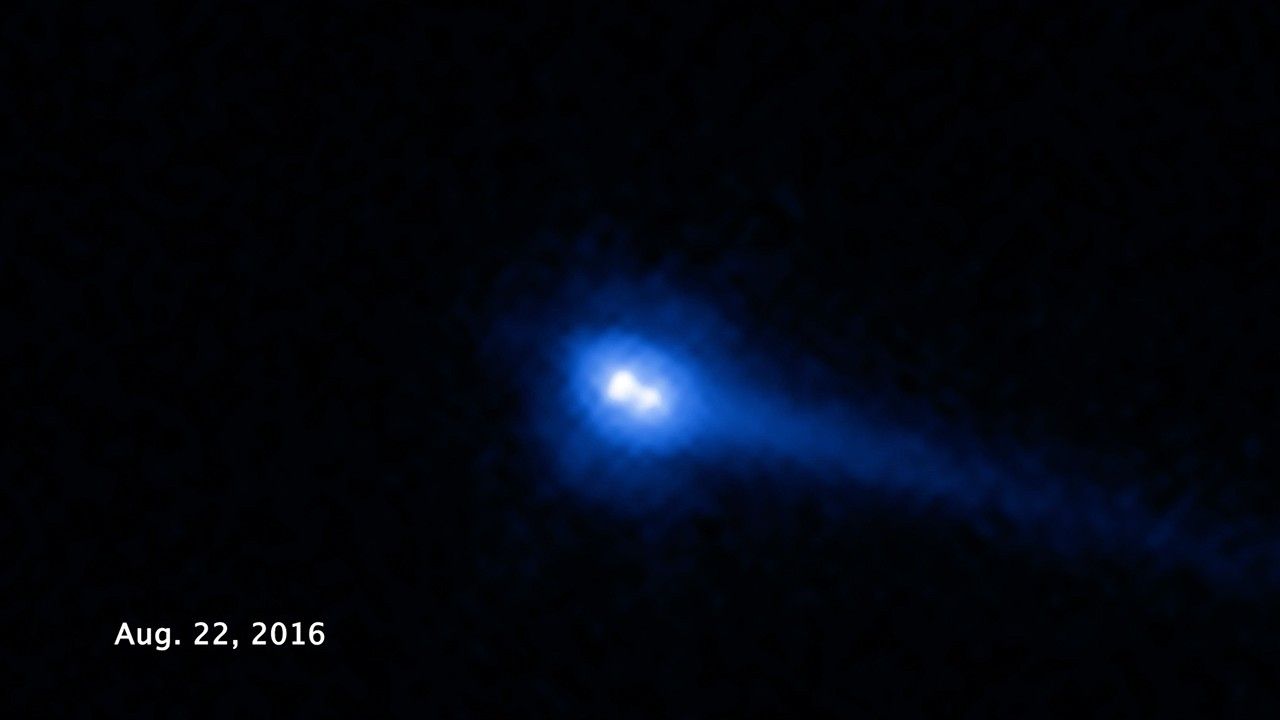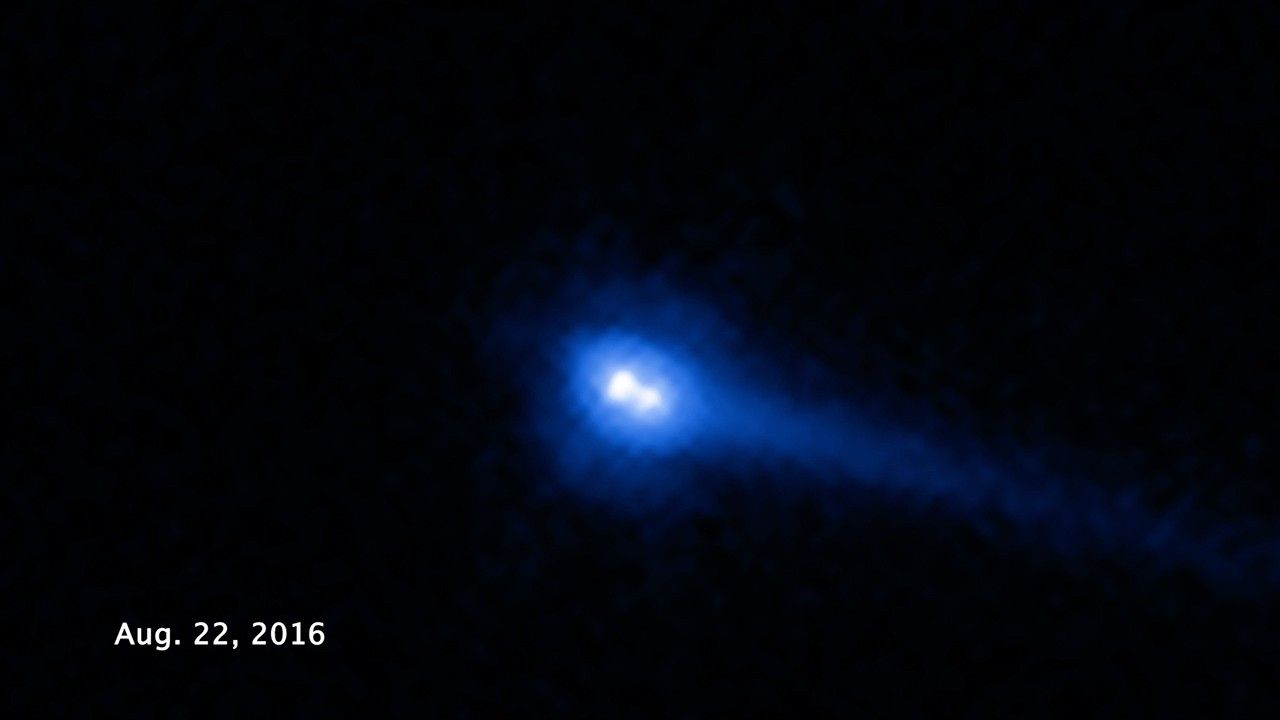1 min read
Compass and Scale Image for Binary Asteroid 2006 VW139/288P

About the Data
- Data DescriptionData DescriptionProposal: A description of the observations, their scientific justification, and the links to the data available in the science archive.
Science Team: The astronomers who planned the observations and analyzed the data. "PI" refers to the Principal Investigator. - InstrumentInstrumentThe science instrument used to produce the data.WFC3/UVIS
- Exposure DatesExposure DatesThe date(s) that the telescope made its observations and the total exposure time.August 22 - September 29, 2016
- FiltersFiltersThe camera filters that were used in the science observations.F606W
- Object NameObject NameA name or catalog number that astronomers use to identify an astronomical object.288P
- Object DescriptionObject DescriptionThe type of astronomical object.A binary comet system
- Release DateSeptember 20, 2017
- Science ReleaseComet or Asteroid? Hubble Discovers that a Unique Object is a Binary
- Credit

These images represent several exposures acquired by the WFC3/UVIS instrument on the Hubble Space Telescope. Color has been applied to the grayscale (black&white) images; the brightness maps to different color values.

Related Images & Videos

Binary Asteroid System 2006 VW139/288P
This set of Hubble Space Telescope photos reveals two asteroids orbiting each other that have comet-like features. These include a bright halo of material, called a coma, and a long tail of dust. The asteroid pair, called 2006 VW139/288P, was observed in September 2016 just...

Time-Lapse of Binary Asteroid System 2006 VW139/288P (Smoothed)
This time-lapse video, assembled from a set of Hubble Space Telescope photos, reveals two asteroids orbiting each other that have comet-like features. The asteroid pair, called 2006 VW139/288P, was observed in September 2016, just before the asteroid made its closest approach to...

Time-Lapse of Binary Asteroid System 2006 VW139/288P
This time-lapse video, assembled from a set of Hubble Space Telescope photos, reveals two asteroids orbiting each other that have comet-like features. The asteroid pair, called 2006 VW139/288P, was observed in September 2016, just before the asteroid made its closest approach to...
Share
Details
Claire Andreoli
NASA’s Goddard Space Flight Center
Greenbelt, Maryland
claire.andreoli@nasa.gov































